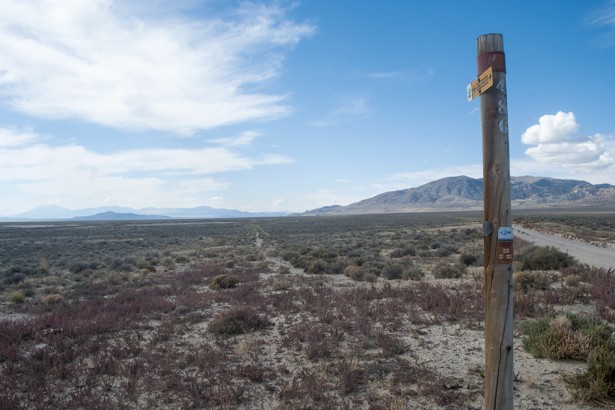
Lots of fiber-optic cable in the United States runs along right-of-way routes for highways and railroads because it offers telecoms a straight-shot easement over a really long distance. Apparently, this method is as popular on defunct rail routes as it is on active ones, a lesson I learned while driving in north Utah along the original route of the transcontinental railroad, near Lucin.
Driving down a dirt road toward the old railroad grade, I passed old AT&T buried fiber signage. I was about five miles outside of the absolute middle of nowhere, so seeing a post for buried fiber-optic cable seemed a little weird. Following the arrow on the sign took me to another post, and a manhole.
I tried calling the numbers on the AT&T sign. One was for a state utility-locating service, and one gave me a busy signal.
Viewing the route from satellite imagery, it looks like the fiber eventually splits off the railroad route and returns to the highway near Lucin. Possibly into this weird building that may or may not be an AT&T switching station or amplifier.
I hadn’t actually gone on that drive looking for fiber—I was going to see Terrace, a ghost town along the old railroad route that has basically been reduced to a pile of bricks and a Bureau of Land Management sign. Considering that the fiber was probably buried long after Terrace disappeared, it’s likely that AT&T brokered that fiber route through the BLM and not the Union Pacific.
I don’t really know for sure, but I doubt that AT&T fiber in the desert is actually being used for network traffic. It would probably be too perfect for a ghost town on an abandoned railroad route to be a secret, silent conduit of the network.